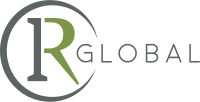The automobile industry was one of the main responsible for the growth of the Brazilian economy since its “apparition” at the beginning of the 20th century. The installation in the local market of manufacturers like Ford and GM between the 1920s and 1940s and encouraged the arrival of other manufacturers, so that the production and subsequent commercialization of automobile products leveraged greatly the national economy, making that industry the biggest responsible for the Gross Domestic Product (GDP) of the country.
With this scenario, the auto parts industry was born, originally conceived to meet the needs of the automakers, both in the context of production and in the after-sales demands. However, players in this industry were soon able to see potential in another niche: the independent auto parts replacement market. With the increase in car sales in the following decades, there was a natural increase in demand in retail (directly to service providers and final consumers) by replacement parts, making this one of the main segments of the sector today.
In this sense, it is seen that even with the current political and economic scenario, and although the fall in the production of vehicles by the automakers, the auto parts sector has been showing a lower rate of decline comparing to other sectors of the auto industry. And much is due exclusively to the aftermarket, which has been responsible for the resilience demonstrated by the sector during the recent period of economic recession experienced by the country.
However, despite the discouraging economic scenario in the recent past, it is possible to observe an extremely positive scenario in the auto parts industry. Both ANFAVEA – National Association of Motor Vehicle Manufacturers and SINDIPEÇAS – National Union of the Component Industry for Motor Vehicles, project a sector growth for this year 2017, being that the first projected growth of up to 9%, compared to the projected 2.7% for the second.
It should be noted that this projection is strongly related to the recovery of the auto industry as a whole. Although it has gone through a difficult period recently, the auto industry has shown signs of recovery. According to the Anfavea Report, in the last semester of the current year we had a 23% increase in car production compared to the same semester of the previous year and a 57.7% increase in exports. This report is in line with the latest 2017 Fleet Report presented by Sindipeças – National Union of the Components Industry for Automotive Vehicles, which indicates that in the last year (2016) Brazil witnessed a growth of 0.7% in its circulating fleet compared to the year 2015, currently owning approximately 42.9 million vehicles, including light commercial vehicles, trucks and buses.
Regarding exclusively to the auto parts sector, one of the data that demonstrates the strength of the sector is the Trade Balance, which presented a surplus of R$ 626.3 million in May of this year, an increase of 12.0% in relation to April and 8.4% in relation to the same month of the previous year, with Argentina, the United States, Mexico and Germany being mainly responsible for the exports of auto parts in the country. In addition, in May 2017 there was an increase of 9.8% in the variation of consolidated nominal net billing compared to the same month of 2016. And when we look at the aftermarket, it is possible to verify a 2.29% increase in sales between the months of March 2016 and March 2017.
The projections made by Sindipeças for the year 2017 indicate growth in the real billing (without the inflationary effect) of the sector, leveraging the process of job creation and demonstrating that their projections go alongside with Brazilian GDP. In this regard, considering the strong correlation that the sector has with the national GDP, since the projections made for the GDP are for recovery of the economy, the same is true for this sector.
It is important to mention that Banco do Brasil and Caixa Econômica Federal are studying the possibility of implementing incentive programs for this industry in order to attract new investors.
As can be seen, the auto parts industry is in a clear recovery, following the resurgence experienced by the automobile industry and the Brazilian economy as a whole, so that this is an extremely favorable time for those interested to invest in the sector.
